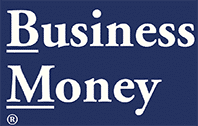Keeping your home-based business in the black
Are you operating a home-based business? If so, are you able to cover all the typical monthly expenses that entrepreneurs face? Even a one-person operation has basic, ongoing costs to stay afloat. Somehow, you got through the costliest phase, which was startup. Now is the time to hunker down and deal with those regular bills, the ones that will keep your business in the black, as accountants say.
What if you don’t have additional savings to cover all the expenses? And what if you’re still building up the customer base? There are ways to deal with that dilemma, which is the first step. The second step is knowing which ongoing costs you’ll face once the company gets underway and begins earning a profit. First things first, which means gaining access to some emergency money to keep things going until you reach target profit levels.
Funds: Home equity loans, savings, cash flow
There are three excellent resources for business owners who need cash to stay afloat. There are home equity loans, excess savings, and incoming profits, namely cashflow. The dilemma many people face is that the second and third items on that list are often depleted or minuscule. That’s why homeowners are fortunate.
They can access the built-up equity in their residential property and immediately put that cash to work in their home-based enterprise. You can see all the options, including loan terms, interest rates, tax considerations, and much more on an online home equity loan planning page. Not only can you see how to repay according to a preset schedule, you’ll find out everything about getting the most out of the equity you already have in your home.
Top three ongoing expenses
It is easy to overlook all the little things that it takes to build a successful company, no matter how large or small it is. For instance, many one-person, home-based entities are quickly overwhelmed with monthly bills for industry publications, subscriptions, phone lines, internet charges, health insurance, business insurance, advertising, and many more. The largest categories will differ depending on what field you’re in. But, for the majority of at-home enterprises, insurance, advertising, and phone bills are the big three recurring expenses.
The cost of acquiring customers
Advertising is one of the vital, unavoidable costs you are bound to face as an entrepreneur. Simply put, the broad category includes things like promotions, giveaways, online ad fees, radio and TV ads, print promotions, sponsored or hosted events designed to bring in new customers, and more. It’s always essential to compare outlays with expected benefits when doing any kind of marketing campaign. That’s because some campaigns, particularly those based on online ads, can drum up plenty of new clients but also come with high fees. It’s necessary to sit down and crunch the numbers before forking over any of your hard-earned cash for online, SEO style advertising efforts.
Outsourcing
Most sole proprietors spend a set amount each month on outsourced services, like accounting, content creation for websites, legal help, and web page design. Keep your outsource costs to a minimum by not hiring someone to do a task that you can do yourself. Of course, that’s assuming that you have the time to do it.
Consider how investing can be beneficial to your small business. If you have the available funds to dedicate to outside investments to facilitate positive cashflow, think about what that means for your goals and bottom line. The money you earn from investing can help you build a business emergency fund, spend money to make changes to the business, or be an element of your retirement savings.

